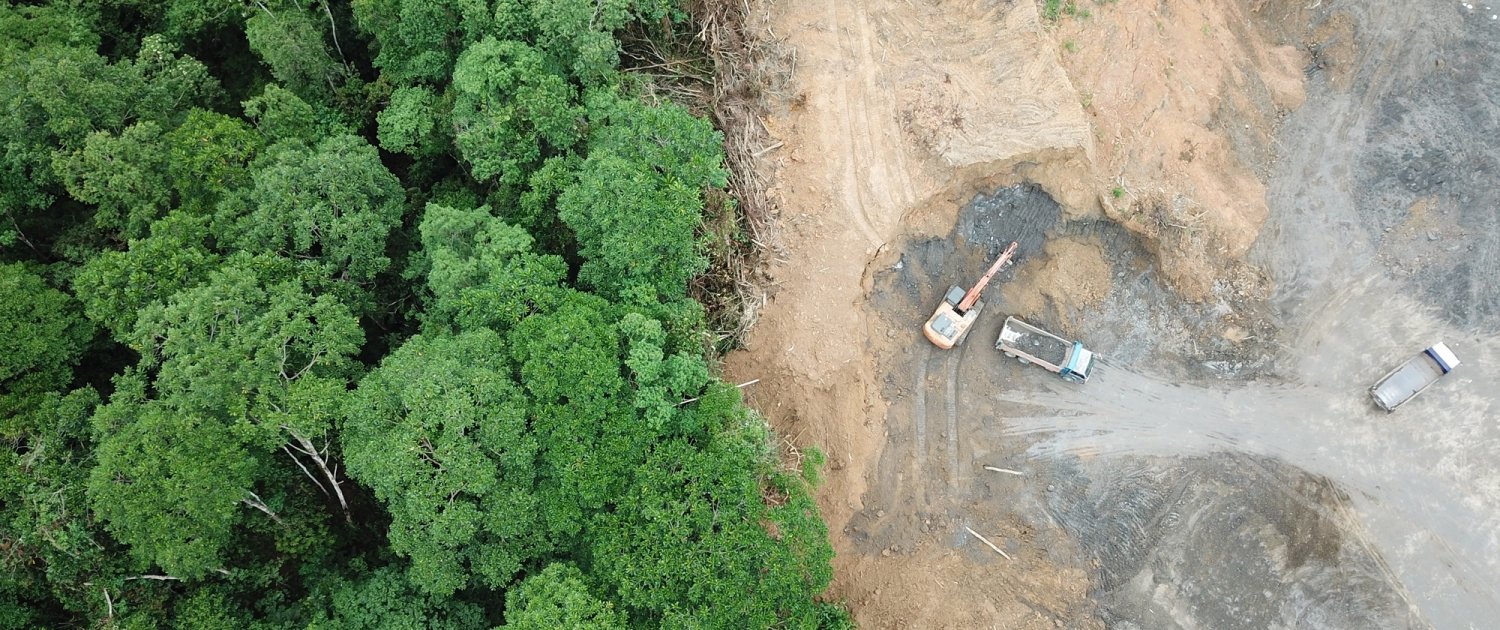What are the causes of deforestation in the Amazon?
The Amazon rainforest, covering much of northwestern Brazil and extending into Colombia, Peru and other South American countries, is the world’s largest tropical rainforest. The rainforest is covered by thousands of rivers, including the Amazon.
The Amazon has been home to indigenous tribes for thousands of years; however, it is now under considerable threat from exploitation caused by the demand for resources such as timber and by clearing the forest for activities such as rearing livestock and growing crops.
What are the main resource-exploiting activities in the Amazon rainforest?
Logging
The graph below shows the leading causes of deforestation in the Brazillian Amazon. From this, we can see that commercial logging (cutting down trees to sell/use the wood) accounts for only 3% of deforestation. However, deforestation must occur before the other land uses occur.
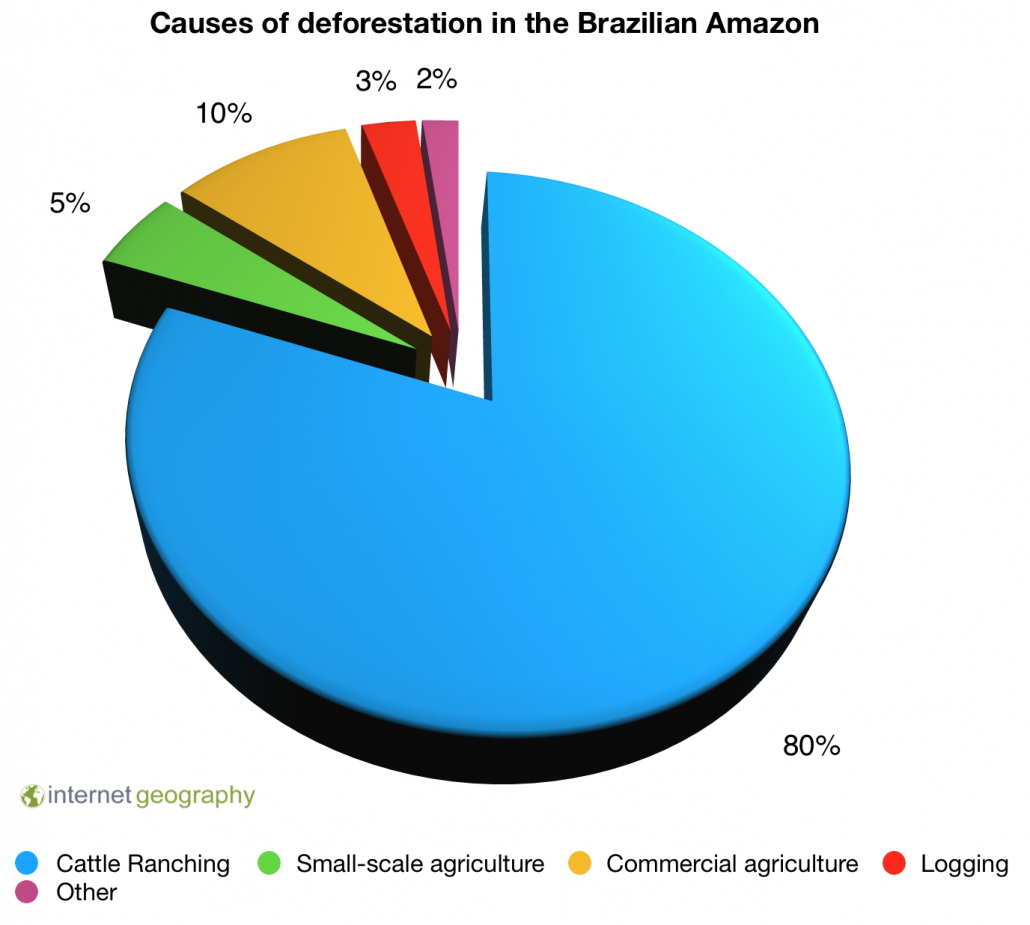
Causes of deforestation in the Brazilian Amazon
Logging companies are mainly only interested in high-value timber such as mahogany and teak, which is sold to companies in other countries. Where only high-value trees are removed, it is called selective logging. However, to access more valuable wood, it is often the case that other, less valuable, trees are also removed to improve access. These are commonly used as fuelwood or made into pulp or charcoal. Vast areas of forest are cleared at once. This is known as clear felling.
Mineral Extraction
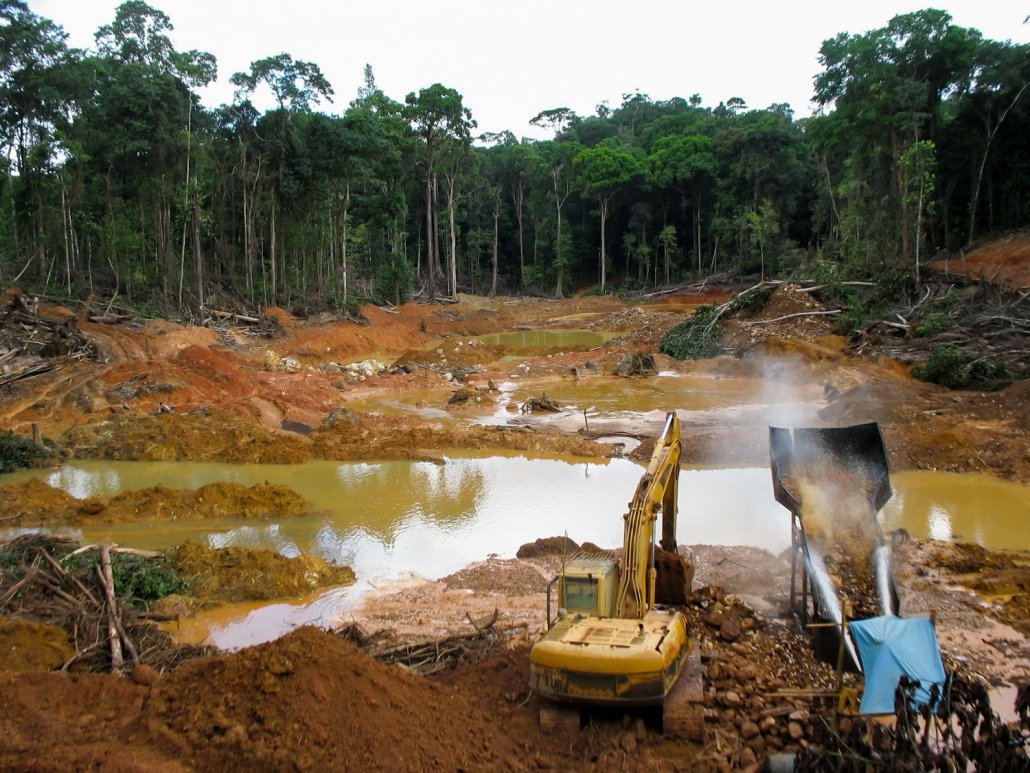
Gold mining in the Amazon Rainforest
The primary type of mining in the Amazon is for gold. However, other minerals are also extracted including iron ore, bauxite and oil. In 1999 10,000 hectares of land were used for mining. However, this had increased to 50,000 hectares by 2016. Mining causes complete devastation to the environment as trees are clear-felled, and the topsoil is completely removed to access the minerals underground.
The timelapse below shows deforestation caused by the growth of the Carajas mine, the world’s largest iron ore mine.
Attempts are being made to restore the rainforest in areas that have been mined. The BBC news website has a video about this.
Energy development
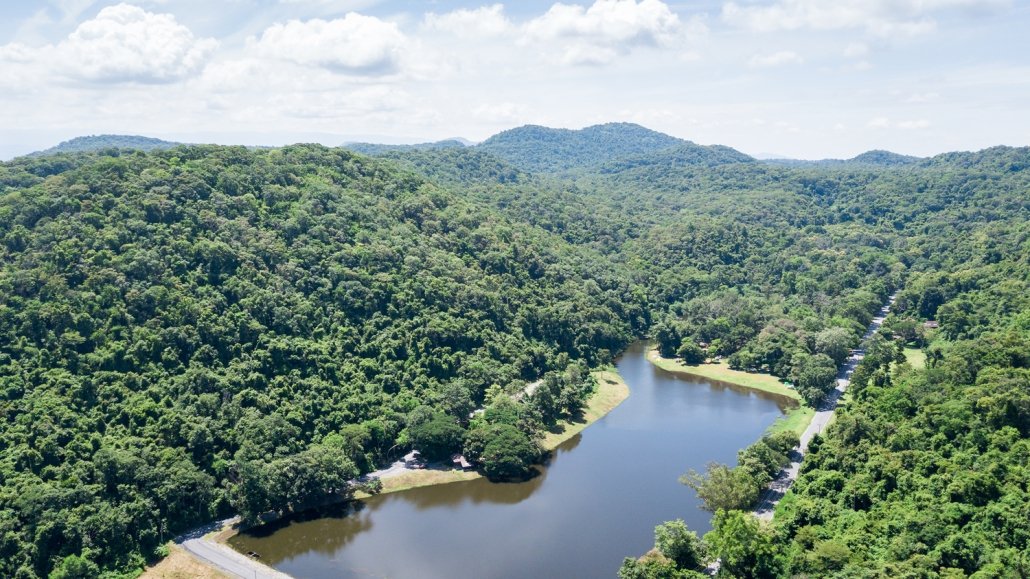
A reservoir in the Amazon rainforest
An unlimited supply of water and ideal river conditions have led to the development of hydroelectric power stations (HEP Stations). Constructing dams and reservoirs involves flooding vast areas of rainforest. Over time the submerged forest causes the water to become acidic as it rots. This can cause turbines within the dam to corrode. In addition to this silt, from surface run-off, causes dams to become blocked.
Illegal Trade in Wildlife
Poaching, hunting and illegal wildlife trafficking are big business in Brazil. This does not directly cause deforestation; however, it is upsetting the natural balance of the rainforest ecosystem.
What activities are causing the rainforest to be cleared?
Commercial farming: Cattle
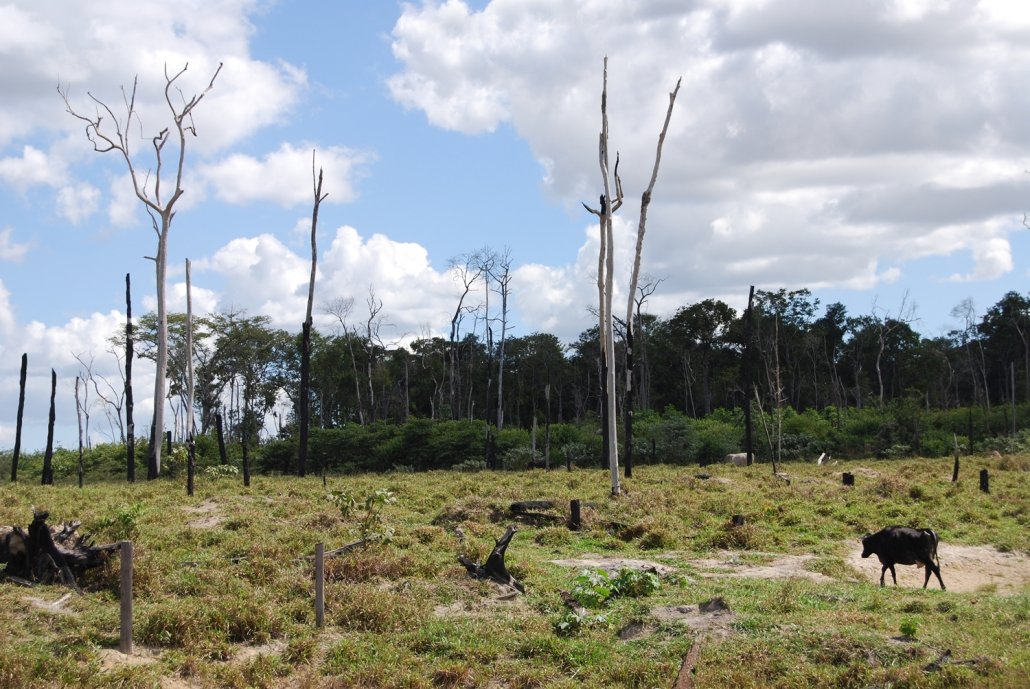
Cattle ranching in the Amazon rainforest
Ranching is the leading cause of deforestation in the Brazillian Amazon. Ranching involves clearing an area of rainforest then rearing cattle on the land. Deforestation leads to the destruction of the nutrient cycle, which means the land can only sustain herds for a short period because the quality of pasture quickly declines. The cattle then have to be moved on to a recently cleared area of land.
Subsistence farming: Crops
There are nearly 3 million landless people in Brazil alone. The government has cleared large areas of the Amazon Rainforest and encouraged people to move there. The scheme has not been successful. Farmers stay on the same land and attempt to farm it year after year. Nutrients in the soil are quickly exhausted as there is no longer a humus layer to provide nutrients. The ground becomes infertile, and nothing will grow.
Commercial farming: Crops
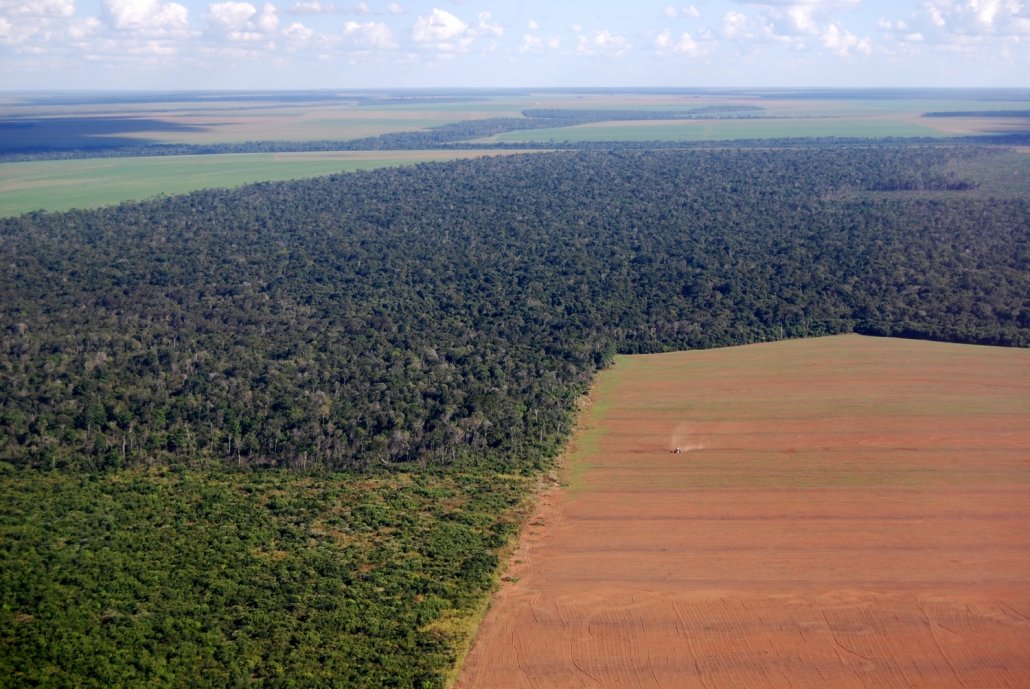
Soy bean plantation in the Amazon
Large plantations have been created from cleared areas of rainforest. Crops such as oil, pineapple and sugar cane are grown. The majority of clearance for commercial farming has occurred to make way for soybean cultivation. As with cattle farming, the land can only sustain crops for a short period, which leads to further deforestation.
Road Building
Roads are required to access the Amazon rainforest and bring in heavy transport and machinery and send goods to market, roads are necessary. Large swathes of rainforest have been removed making way for roads. Once a road has been constructed, it opens the rainforest to other users. People settle along roads due to accessibility, which leads to further deforestation as houses are built and crops are grown. The construction of the Transamazon Highway has allowed increased access to remote areas of the Amazon Rainforest.
The animation below shows how forest clearance occurs once roads have been constructed.
The image below shows a clearing made by a subsistence farmer along the Amazonian highway. Roads bring colonisation and destruction to the Amazon rainforest.
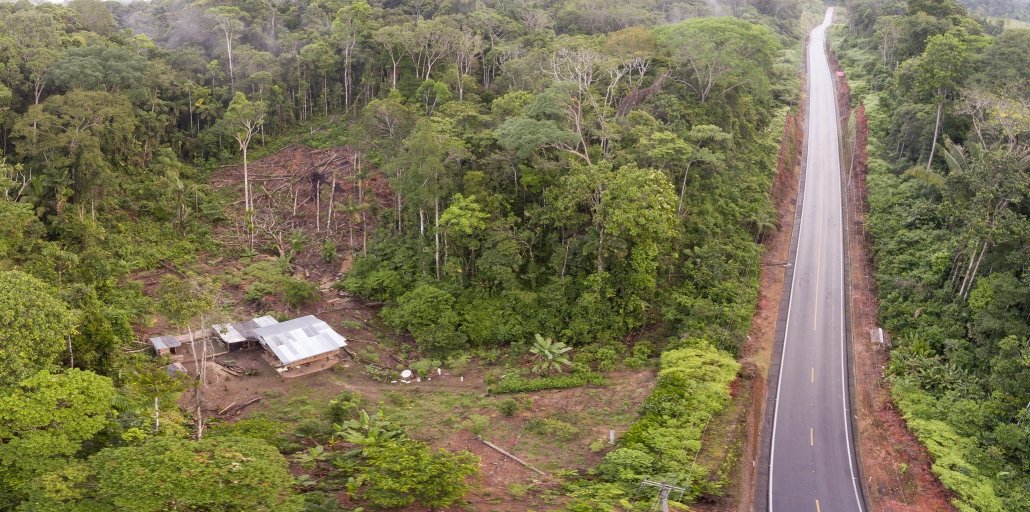
A clearing made by a subsistence farmer along the Amazonian highway
Settlement and population growth
The economic activities discussed on this page require workers. As industry developments, it brings economic opportunities which result in people migrating to the rainforest to get a job. As these people need homes and services further deforestation occurs.
Related Topics
Use the images below to explore related GeoTopics.

